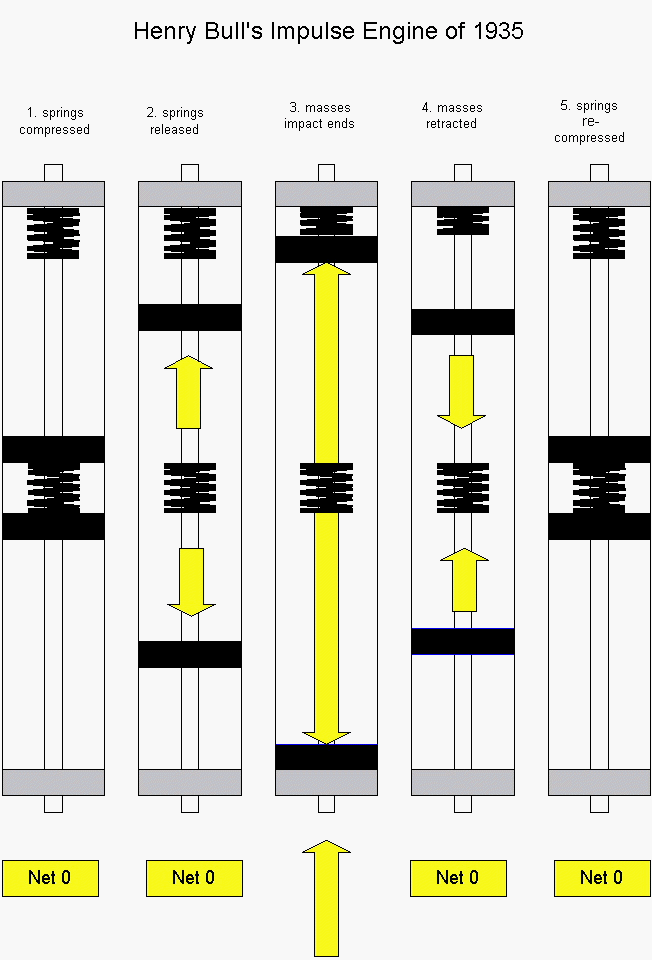
This a fairly simple “motion rectifier” that lends itself to home experimentation. It can probably be built with solenoids manufactured for sprinkler controls and some simple electronics.
Henry Bull demonstrated this in 1935. At that time there was no space program, so its feeble thrust was eclipsed by the alternatives of the day. Today, however, even a feeble thrust, produced continuously over a long period of time, has great significance to the space program, especially since it expends no fuel.
The principle can best be explained by referring to the diagram below. Imagine a tube with a guide rod in its center. Around the guide rod are two toroid shaped masses, heavy iron washers perhaps. A compression spring is placed in the middle between the masses. At only one end of the tube is another spring. The other end has no spring. The actions of the masses are controlled by solenoid coils wrapped around the tube (not shown). (One could probably also construct this by putting the solenoids on the rod and having them serve dual purposes as both motivators and masses).
The Motion cycle occurs in 5 steps.
The two masses are brought together, compressing the spring in the middle.
When the masses are released, the spring will uncompress, causing the masses to accelerate away from each other. Assuming the masses are equal, the net motion will be zero, since they cancel each other out traveling in opposite directions.
Now each mass impacts against its respective end. Normally, the energy transferred to the end pieces would also cancel each other out.
But here is the magic –
A spring transmits energy 3 times more efficiently than a flat plate, ergo, there will be a net motion in the direction of the end that has the spring.
Again, all things being equal, the forces cancel each other out…
Ready for another cycle…

Bull believed that improvements on the device would be made by making the transmission of energy more efficient at one end, and less efficient at the other. Perhaps a piece of Sorbathane at the non-spring end will make it work better.
Here is a photo copy of the original 1935 Popular Science Article about his device. Notice the photograph of his test setup. By knowing the mass of the device and the angle of its arc when activated, would allow one to calculate the specific impulse of its output. It also demonstrates that the device produces a net unidirectional thrust….

Regards,
Cris Paltenghe ( cris_paltenghe@yahoo.com )
Return to the Inertial propulsion main page